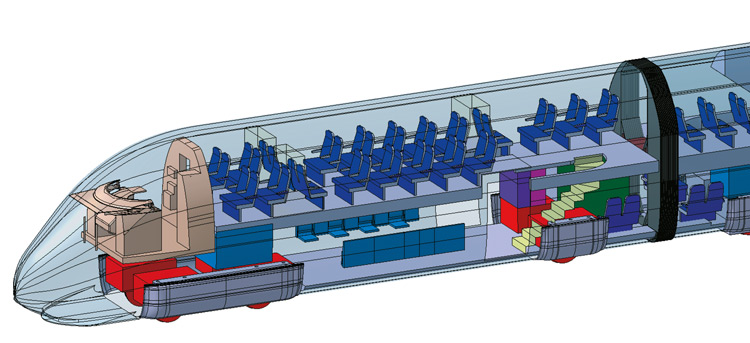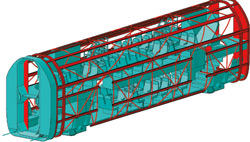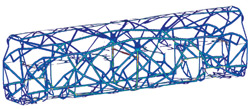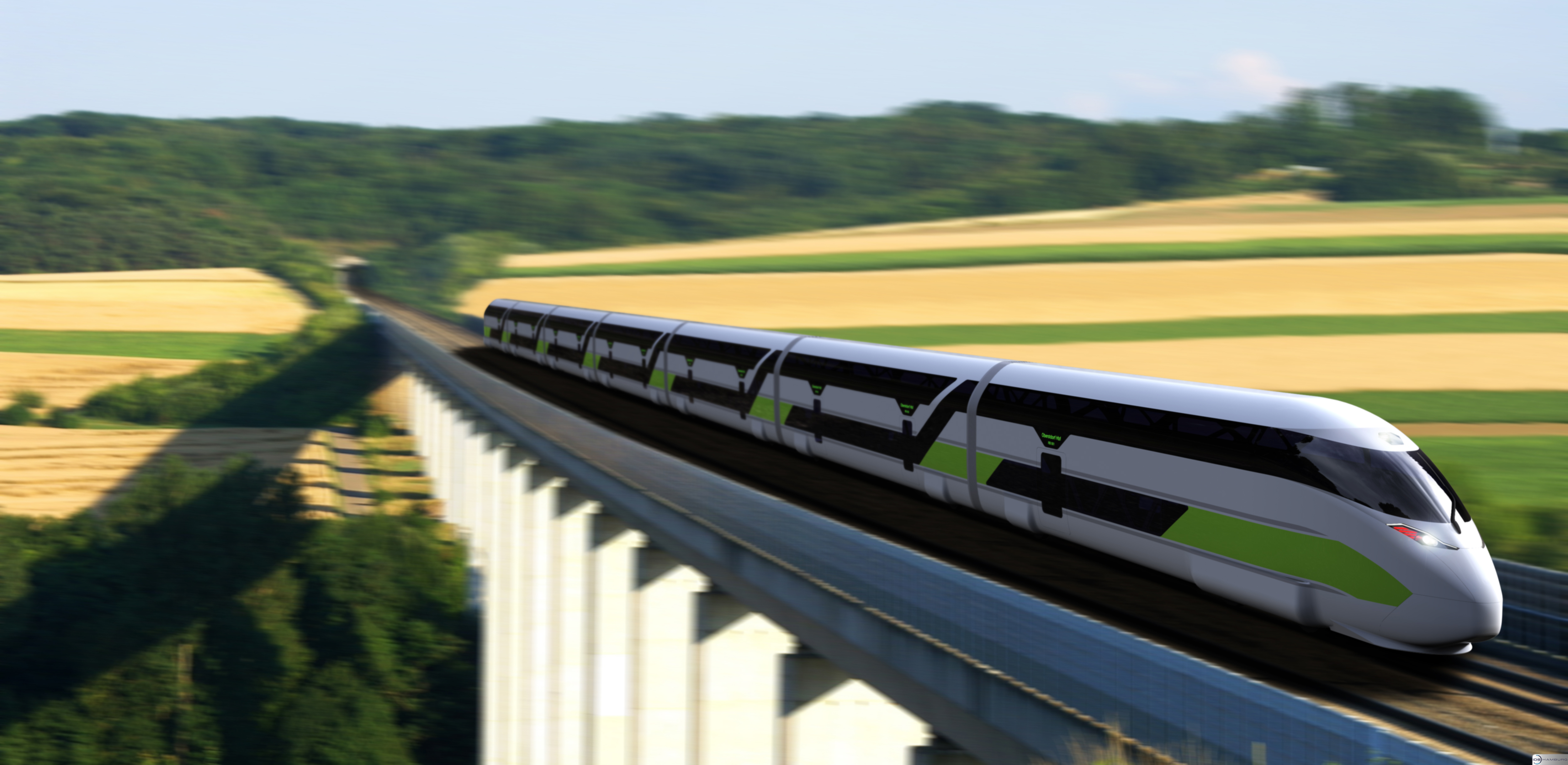The DLR develops concepts to show the trends and technologies for future rail vehicles. The main goals of the Next Generation Train (NGT) project are shorter travel times and reductions in specific energy consumption, noise emissions, and wear, while increasing passenger safety and comfort and reducing life cycle costs. To achieve these goals, an operational concept with a family of high-speed trains was developed: The 400 km/h passenger train NGT HGV, using the main high-speed-lines, and the 230 km/h intercity train NGT LINK, to serve passengers from the surroundings.
The NGT LINK Electrical Multiple Unit

NGT LINK is a seven-car double-deck inter-regional train that connects smaller cities with each other and with the larger cities served by the long-distance train NGT HGV. With its hybrid power system, NGT LINK can run on lines equipped for inductive power transfer, but also on conventionally electrified and partially electrified lines. NGT LINK achieves the goals of the NGT project through a combination of lightweight design, an innovative propulsion system, and a time and energy-efficient operating strategy. Various measures enable a reduction of specific energy consumption of 50 per cent compared to its reference train, the ICE TD, and the passenger-flow optimised layout of the train facilitates short changeover times, ensuring reduced travel times.

The design of NGT LINK’s double-deck car bodies enables significant mass reductions through the use of light-weight materials and a force-flow optimised structure. While the ICE TD weighs 216 tonnes, NGT LINK, which is a full 13 metres longer, weighs only 215 tonnes, yet seats 143 per cent more passengers (475 instead of 195).

The innovative mechatronic running gear that NGT LINK uses offers many advantages over conventional bogies. Because every wheel on the train is driven independently, there is no need for an axle within every wheelset. In a similar fashion to NGT HGV, this allows a continuous corridor on both levels of the train, making NGT LINK a full double-decker. Additionally, driving each wheel enables regenerative braking at each wheel, resulting in large energy savings for a train with frequent stops.
The NGT LINK concept shows how trains of the future can be designed in order to offer competitive, economical, and ecological transportation solutions.


